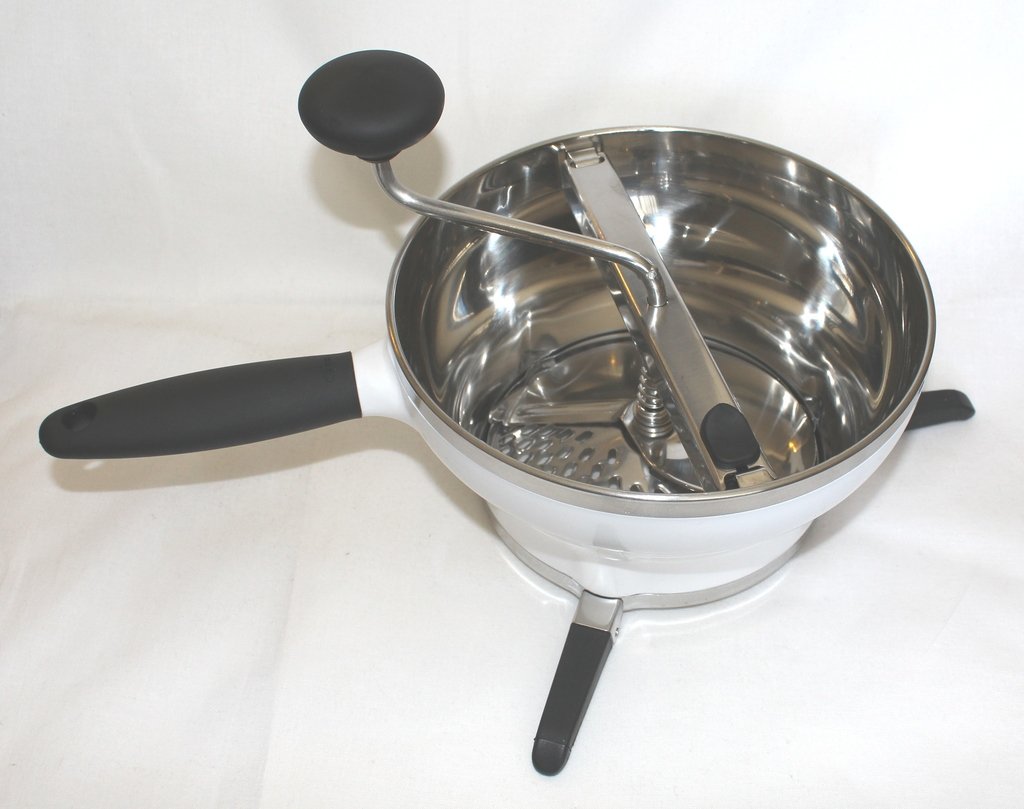Your Cart is Empty
FREE Worldwide Shipping! | +1 365 654 6605
FREE Worldwide Shipping! | +1 365 654 6605
September 07, 2023 6 min read

In the kitchen, having the right tools can make all the difference in preparing delicious meals. One such tool is the food mill, which is commonly used for straining and pureeing foods like mashed potatoes, tomato sauce, and baby food. However, not everyone has a food mill in their kitchen, or their food mill may be broken. But fear not! There are several great alternatives that can be used as substitutes for a food mill. In this comprehensive guide, we will explore these alternatives, their benefits, and how to use them effectively.
Before we delve into the substitutes, let's first understand what a food mill is and why it is a useful kitchen tool. A food mill is a classic kitchen tool that consists of a bowl, a crank, and a bottom plate with holes. It is primarily used for mashing and pureeing foods, as well as separating skins and seeds from fruits and vegetables. The crank is used to crush the food against the bottom plate, allowing the puree to pass through the holes while leaving behind any unwanted parts. One of the best substitutes for a food mill is a combination of a food processor and a sieve. A food processor has sharp blades and a fast pulsating motion, making it perfect for pureeing foods. Here's how you can use this substitute: This method allows you to achieve a similar texture as you would with a food mill, but it may require some extra steps to remove skins and lumps. Nevertheless, it is a reliable and effective substitute. If you don't have a food processor, another alternative is a blender. Most households have a blender, making it a convenient substitute for a food mill. Here's how you can use a blender to puree foods: Keep in mind that a blender may not be as effective at straining out unwanted parts as a food mill. However, it is a quick and convenient way to achieve a smooth puree. For a simple and effective substitute, you can use a strainer and a wooden spoon. This method is particularly useful for straining and removing unwanted parts from purees, such as tomato sauce. Here's how you can use this substitute: This method may take a bit more effort compared to using a food mill, but it is a practical solution if you don't have one available. If you're working with a small batch of potatoes or other soft foods, a potato ricer can be an excellent substitute for a food mill. Here's how you can use a potato ricer: A potato ricer is a handy tool that can quickly and effortlessly create smooth purees. It is particularly useful for mashed potatoes and other soft vegetable purees. For softer foods like tomatoes and potatoes, a combination of a cheese grater and a hand mixer can be a great substitute for a food mill. Here's how you can use this substitute: This method allows you to achieve a similar texture as you would with a food mill, but it may require some extra steps and caution when using the hand mixer. While the substitutes mentioned above are the most common and effective, there are a few other alternatives worth considering: It's important to note that these alternatives may not provide the same level of convenience and efficiency as a food mill or the previously mentioned substitutes. However, they can still be useful in certain situations. When deciding on the best substitute for a food mill, consider the following factors: To make the most of your food mill substitutes, keep the following tips in mind: While a food mill is a versatile tool for straining and pureeing foods, there are several effective substitutes that can be used in its absence. From a food processor and sieve to a blender, potato ricer, cheese grater and hand mixer combo, and more, these alternatives provide options for achieving smooth and consistent purees. Consider the texture, efficiency, and availability of the tools when choosing a substitute, and don't be afraid to experiment and adjust techniques to achieve the desired results. With these substitutes, you can continue to create delicious recipes without the need for a food mill. Now that you have learned about the various food mill substitutes, it's time to put your newfound knowledge to use in the kitchen. Experiment with different tools and techniques to find the substitute that works best for you. Happy cooking! References:Section 1: Understanding the Food Mill
What is a Food Mill?
Benefits of a Food Mill
Section 2: Food Processor + Sieve
Section 3: Blender
Section 4: Strainer + Wooden Spoon
Section 5: Potato Ricer
Section 6: Cheese Grater + Hand Mixer
Section 7: Other Alternatives
Section 8: Choosing the Right Substitute
Section 9: Tips for Using Substitutes
Section 10: Conclusion
Be the first to know about upcoming sales and promos. Get a 10% discount coupon when you subscribe!